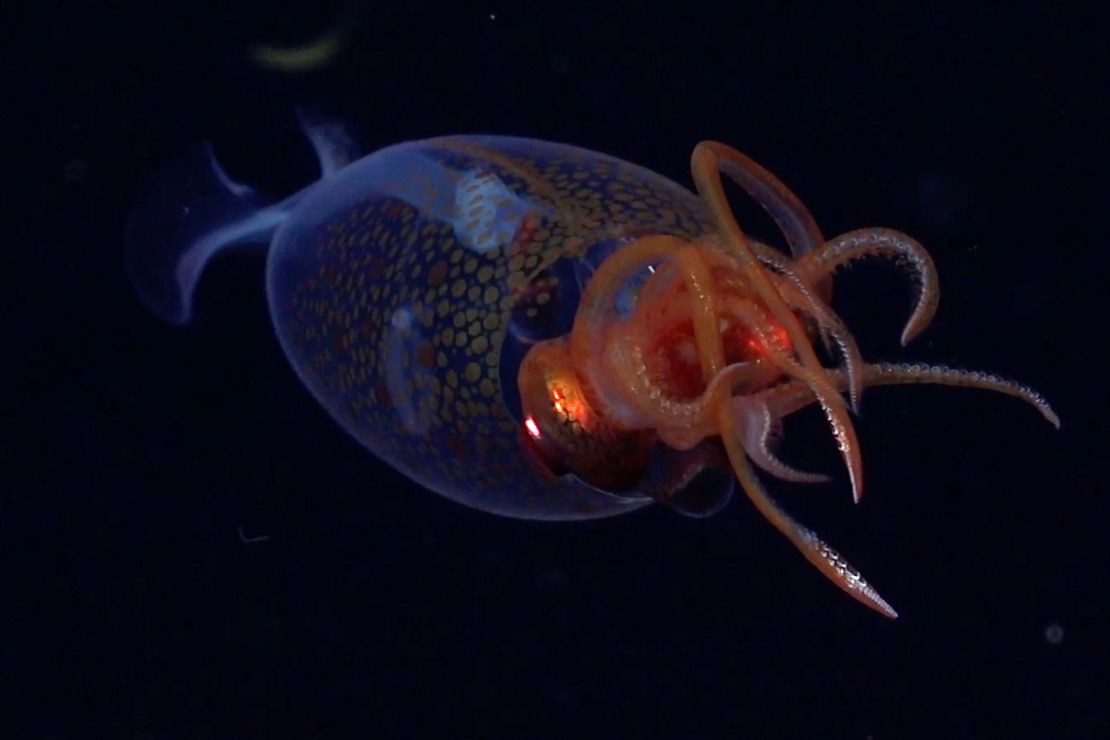For the first time since its discovery a century ago, the colossal squid—the world’s heaviest invertebrate—has been filmed alive in the wild. The groundbreaking footage, captured by an international team of researchers near the remote South Sandwich Islands in the South Atlantic, shows a nearly transparent juvenile squid gracefully swimming at a depth of about 2,000 feet. Measuring just 11.8 inches long, this young specimen is a far cry from its fully grown relatives, which can reach staggering lengths of up to 23 feet and weigh as much as half a ton.
The historic sighting was made possible by a remotely operated vehicle (ROV) named SuBastian, deployed from the research vessel *Falkor (too)* during a 35-day expedition led by the Schmidt Ocean Institute. Unlike past encounters—where colossal squid were only seen as remains in whale stomachs or dying in fishing nets—this marks the first time the elusive creature has been observed alive in its deep-sea environment. “It’s exciting to see the first *in situ* footage of a juvenile colossal squid and humbling to think that they have no idea that humans exist,” said Dr. Kat Bolstad, a squid expert from Auckland University of Technology who helped verify the discovery.
Colossal squid belong to the “glass squid” family, named for their translucent bodies as juveniles. Over time, they lose this transparency, turning opaque as adults. Little is known about their life cycle, but scientists were able to confirm the species by its distinctive sharp hooks on the tentacles—a feature absent in other glass squid. The expedition, a collaboration between the Schmidt Ocean Institute, Nippon Foundation-Nekton Ocean Census, and GoSouth, also yielded the first-ever footage of a glacial glass squid, underscoring how much remains unknown about deep-sea life.
“This sighting is a reminder that the ocean is still full of mysteries,” said Dr. Jyotika Virmani, executive director of the Schmidt Ocean Institute. The discovery comes exactly 100 years after the colossal squid was first identified, adding a poetic touch to a milestone moment in marine biology. With so much of the deep ocean still unexplored, researchers hope this breakthrough will inspire further expeditions—and perhaps even more astonishing revelations about the giants lurking in the abyss.
Also read: iPhone 17 Pro Max leaks reveal bold new design & major upgrades






